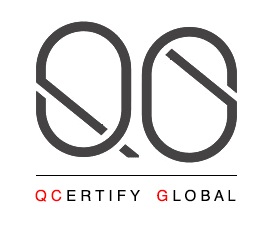Preparing for an ISO audit can be a daunting task, but with the right approach and preparation, it can become a smooth and manageable process. An ISO audit is essential for obtaining and maintaining ISO certification, as it verifies that your organization complies with the necessary standards. Here are some best practices and tips to help you prepare effectively for an ISO audit.
1. Understand the Audit Scope and Requirements
Before starting your preparation, it’s crucial to understand the scope of the audit and the specific ISO standard requirements relevant to your organization. Familiarize yourself with the standard’s clauses and how they apply to your operations.
Key Steps:
Review the ISO standard documentation.
Identify the specific requirements that apply to your organization.
Understand the audit process and what auditors will be looking for.
2. Conduct a Gap Analysis
Perform a gap analysis to identify areas where your organization’s current practices deviate from the ISO standard requirements. This helps in pinpointing specific areas that need improvement before the audit.
Steps for Gap Analysis:
Compare your existing processes against the ISO standard.
Document any gaps or non-conformities.
Develop an action plan to address these gaps.
3. Develop a Detailed Audit Plan
Create a comprehensive audit plan that outlines all the necessary steps and activities needed to prepare for the audit. This plan should include timelines, responsible personnel, and key milestones.
Components of an Effective Audit Plan:
Schedule of pre-audit activities.
Assignment of responsibilities to team members.
Timeline for completing corrective actions and improvements.
4. Train Your Team
Ensure that all relevant employees are well-trained and aware of the ISO standards and audit process. Training helps your team understand their roles and responsibilities during the audit and fosters a culture of quality and compliance.
Training Tips:
Conduct ISO awareness sessions for all employees.
Provide specific training for those directly involved in the audit.
Use practical examples and case studies to illustrate key points.
5. Implement Document Control
Document control is a critical aspect of ISO compliance. Ensure that all documents, including policies, procedures, and records, are up-to-date, easily accessible, and properly managed.
Best Practices for Document Control:
Maintain a central repository for all ISO-related documents.
Implement version control to track document updates.
Regularly review and update documents to reflect current practices.
6. Conduct Internal Audits
Internal audits are a vital part of your preparation. They help you identify potential non-conformities and areas for improvement before the external audit. Conduct these audits regularly and use the findings to enhance your processes.
Internal Audit Tips:
Develop a checklist based on the ISO standard requirements.
Involve trained internal auditors to conduct the audits.
Document findings and corrective actions taken.
7. Address Non-Conformities
When non-conformities are identified during internal audits or gap analysis, take prompt corrective actions. Document these actions and ensure they effectively resolve the issues.
Steps to Address Non-Conformities:
Investigate the root cause of each non-conformity.
Implement corrective actions to address the root cause.
Monitor the effectiveness of corrective actions over time.
8. Conduct a Management Review
Hold a management review meeting to evaluate the readiness of your organization for the ISO audit. This review should assess the performance of your quality management system (QMS), compliance with ISO standards, and the effectiveness of corrective actions taken.
Management Review Focus Areas:
Results of internal audits and gap analysis.
Status of corrective actions and improvements.
Overall readiness for the external audit.
9. Prepare for the Audit Day
On the day of the audit, ensure that all necessary documentation is readily available and that key personnel are prepared to interact with the auditors. Create a welcoming environment and facilitate open communication with the audit team.
Audit Day Tips:
Arrange a dedicated space for the audit team.
Ensure all relevant documents and records are organized and accessible.
Brief your team on the audit process and their roles.
10. Foster a Culture of Continuous Improvement
Preparing for an ISO audit is not just a one-time effort but an ongoing process. Foster a culture of continuous improvement within your organization by regularly reviewing and enhancing your QMS and compliance practices.
Continuous Improvement Strategies:
Regularly review and update processes and procedures.
Encourage employee involvement and feedback.
Stay informed about changes to ISO standards and best practices.
Conclusion
Preparing for an ISO audit requires careful planning, thorough training, and continuous effort. By understanding the audit requirements, conducting internal audits, addressing non-conformities, and fostering a culture of continuous improvement, your organization can achieve and maintain ISO certification successfully.
Remember, the goal is not just to pass the audit but to continuously improve your processes and deliver exceptional value to your customers.






